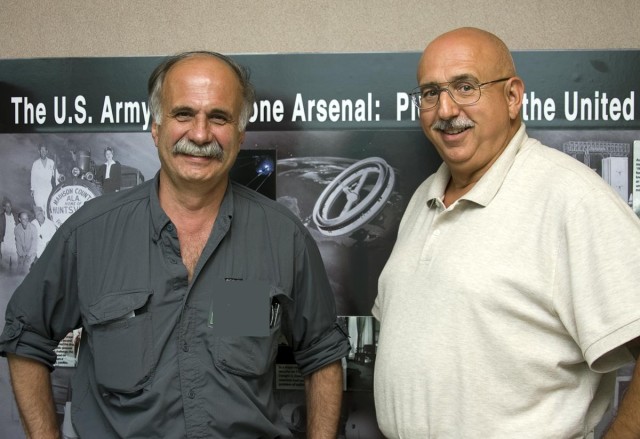Dr. Mike Gruntman, professor of astronautics at the Viterbi School of Engineering of the University of Southern California, stopped by for a brief visit to the Office of the Command Historian on Aug. 17.
Gruntman partnered with the office a few years ago. He was looking for historical footage of the Army's early pioneering efforts in space for his lectures.
Mike Baker, AMCOM's command historian, jumped at the opportunity.
"Who better than one of the world's eminent physicists and early space experts to help spread our story'" Baker said.
Gruntman, the author of a number of award-winning books on the early history of spacecraft and rocketry, said former Redstone Arsenal commanders Maj. Gen. Holger Toftoy and Maj. Gen. John Medaris should share in much of the credit for the early Army successes in space, such as Explorer I, the free world's first satellite.
"They were the right men at the right place at the right time. (Dr. Wernher) von Braun could not have done it alone. It's always a team effort," Gruntman said.
Gruntman's interest in the Army's early pioneering efforts in space is made even more interesting by the fact that his father helped build the Soviet Union's first space port in Tyuratam, Kazakhstan - now know as the Baikonur Cosmodrome. "Sputnik I was launched from that site," he said.
In an interview with USC, Gruntman said "Tyuratam was inhospitable, nothing more than a whistle stop with 20 or 30 inhabitants, in the middle of literally nowhere. The Russians wanted to keep the launch site secret, so they announced that their space launch operations were being conducted from Baikonur, which later became known as Baikonur Cosmodrome. In reality, Baikonur is located 200 miles away from Tyuratam."
Sputnik was the satellite launched by the Soviet Union on Oct. 4, 1957. It was that "surprise" launch that became the impetus for the White House to order the Army Ballistic Missile Agency team at Redstone Arsenal, headed by Medaris, to go ahead and launch Explorer I. Explorer I was launched Jan. 31, 1958.
Gruntman escaped from the Soviet Union in 1989. He later became a United States citizen. He has consulted with NASA on a number of projects, including the Interstellar Boundary Explorer.
Gruntman said the historical footage supplied by Baker and the office have played a key role in his lectures.
"I want the students to see what was built and look at it from the perspective of the time," he said. "Your films have provided that perspective."


Social Sharing